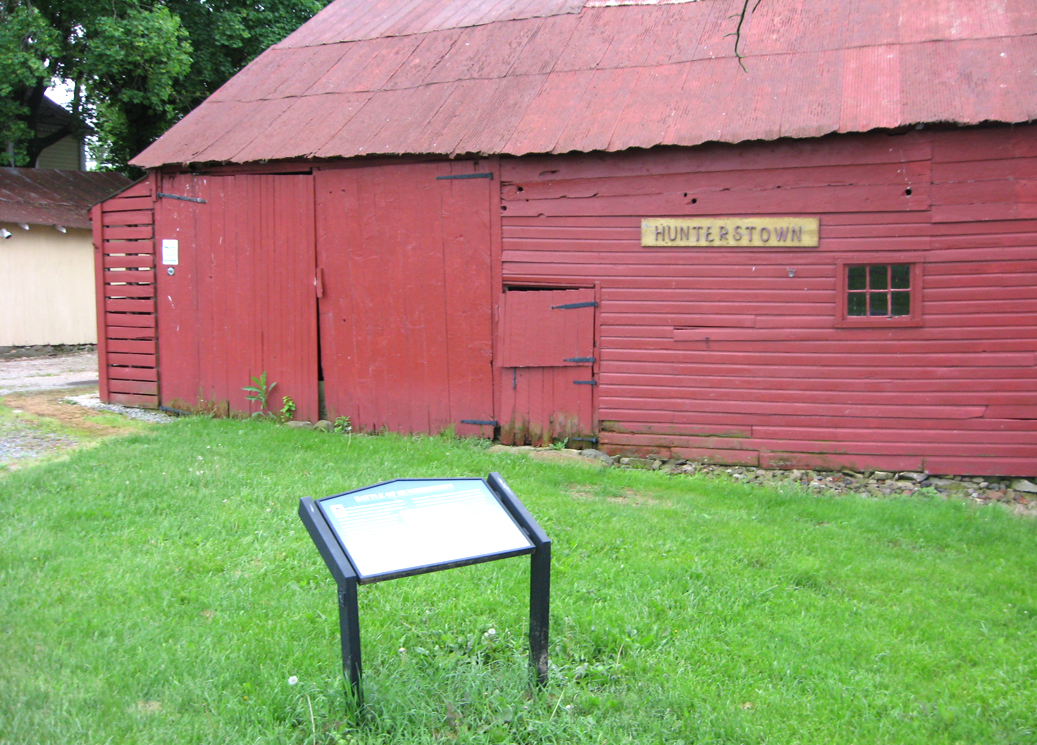The Battle of Hunterstown
On July 2, 1863 the Battle of Gettysburg was in its second day. Confederate Major General “Jeb” Stuart’s exhausted cavalry had finally rejoined Lee’s Army of Northern Virginia after being away on a raid around the Union army. Brigadier General Wade Hampton’s Confederate Cavalry Brigade was ordered to cover Lee’s left flank and took a position on Hunterstown Road northeast of town. At around 4:30 he was attacked by Brigadier General George Custer’s Union cavalry brigade. Hampton’s men drove them off and pursued them into an ambush in Hunterstown. Hampton then regrouped for an attack but Union Brigadier General Elon Farnsworth’s cavalry brigade arrived. Hampton chose not to launch the attack, instead carrying on an artillery duel until darkness fell. The fighting caused Ewell to detach one of his Second Corps brigades for flank security, taking it out of the fight for Culp’s Hill.
Marker and Monument
The Battle of Hunterstown wayside marker is on the south side of Shrivers Corner Road (Pennsylvania Route 394) just east of Beaverdam Creek (see map below). A monument to Union Brigadier General George A. Custer is about 450 feet west on the south side of Shrivers Corner Road.

Text from the marker:
Battle of Hunterstown
In the first three days of July 1863, 165,000 soldiers converged on Gettysburg, leaving their mark forever on its land, buildings, and people. Like sparks from a bonfire, fights strayed far outside the town. One encounter took place in Hunterstown. On the afternoon of July 2, Brigadier General Wade Hampton’s Cavalry Brigade was ordered to protect the Confederate Army’s left flank. Hampton’s Brigade followed the Hunterstown Road, which put it in a perfect position to guard against attacks from the east. At 4:30 P.M., however, Union cavalry under Brigadier General George Armstrong Custer attacked the rear of Hampton’s Brigade. When the Federals retreated, Hampton chased them into an ambush. Union troops, hidden behind barns and high wheat, opened fire as the Rebels galloped by.
The action robbed the Confederate left flank of protection. While Hampton fended off Custer, another brigade stepped in to shield against the threat from other Union cavalry. If not for the Battle of Hunterstown, approximately 2,000 more Confederate infantry may have fought in the evening’s battles for Culp’s Hill and East Cemetery Hill at Gettysburg.

